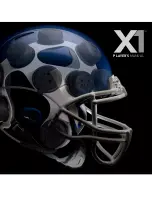
2. PARTS LIST
1 x Carrier with 6 x Straps
3. FITTING THE CARRIER TO YOUR VEHICLE
Clean the vehicle bodywork before fitting the cycle carrier, this along with the protective foam pads fitted to the carrier will help
to avoid scratches. Further protection for car paintwork may be required.
Undo the plastic hand wheels to release the clam shell joints
Position the Carrier on the rear of your vehicle and fit the two hooks of the upper straps (A) onto the top edge of the boot lid,
hatch or door. Tighten the straps in order to hold the Cycle Carrier in place.
Diag. 1
Attach the side straps (B) to a suitable position on the side of the boot lid, hatch or door.
Diag. 1
A
C
B
Diag. 1
D
Adjust the carrier arms
(C)
so they are as shown in
Diag.1
, the arms should be at an angle of between 10 and 30 degrees
above the horizontal. When the arms have been adjusted to the correct angle, tighten the plastic hand wheels
(A) in Daig.2
securely.
Attach the lower straps
(D)
in
Diag.1
to the lower edge of the boot lid, hatch, door or to a secure position on the vehicle
bodywork, tow bar or chassis
.
If straps are detached from the
carrier, they must be rethreaded
as shown in
Diag. 3.
The loose
end of the strap being threaded
through from the rear of the buckle
as illustrated.
The spring loaded catch must be
pressed into the buckle to release
the strap. Pulling the loose end of
the strap through the buckle
should easily adjust the strap
length. To release the straps,
press the cam
(B)
into the buckle
as shown in
Diag. 3.
Diag. 2
A
B
Diag. 3
Check all fixings on the carrier are securely fitted before use.
The straps must be as straight as possible and not twisted, progressively tighten the straps one by one to an equal tension,
ensuring the carrier is firmly and centrally positioned.





















